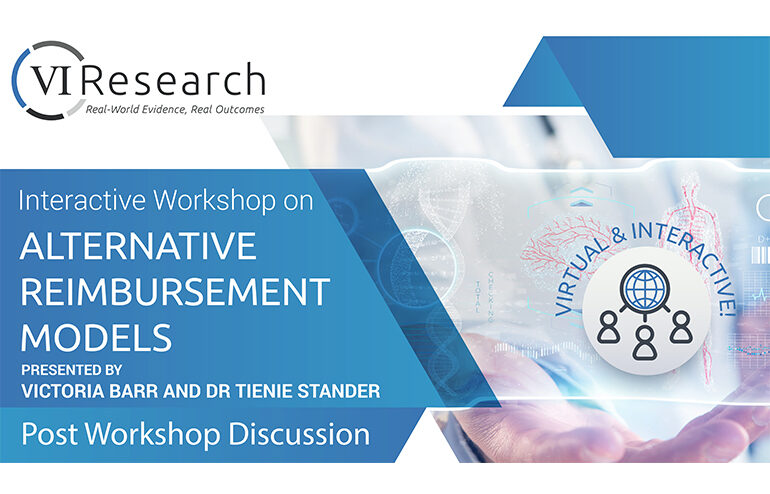Post ARMs Workshop Discussion
VI Research presented an online workshop on Alternative Reimbursement Models (ARMs). The event was well attended and the topic sparked significant debate regarding the challenges faced to implement these models at a country level.
The discussions were insightful and provided the delegates with a better understanding of these challenges and the proposed solutions on how to respond to them. Therefore, in the spirit of continuing debate, I think it is of value to share this insight with a greater audience.
Conventional wisdom dictates that one always starts with “Why?” Why do we want to consider ARMs and what problems are we trying to solve? An effective ARM seeks to align high-quality, cost-effective, integrated treatment with a focus on improving patient outcomes. Stakeholders need to consider the reality of the problems that exist and put forward ARMs as a feasible solution to address these problems. For example, if the problem is affordability or equity for a subgroup of patients, one could position ARMs as a mechanism to improve affordability and equitable access to healthcare. Therefore, communicating the reason why an ARM is a feasible solution is an important starting point.
The first challenge to the successful implementation of ARMs relates to a country’s readiness. This applies to both the legal environment as well as the technical skills and experience required to consider adopting innovative funding mechanisms.
This article will focus on the first challenge and pose the following questions:
-
- Is there an existing legal pathway to accommodate ARMs in a country?
- And, in the absence of a clear legal pathway, how does one proceed?
Once there is agreement on the “Why?” one can move to the “How?” The latter is a function of (amongst other aspects) the legal and regulatory framework of a specific country. By law, some countries do not allow any form of discounting on medicines or medical devices. How does one ensure that one remains compliant with a country’s Laws and Regulations when considering an ARM?
The following is a proposed approach:
Step 1: Engage with stakeholders to ensure that there is agreement on the “Why?” Ensure that there is a shared, compelling reason why an ARM would benefit patients (improved outcomes) and all other stakeholders involved. Importantly, consideration of ARMs relates to international benchmark pricing (more on this in a future article);
Step 2: Build trust by showing aligned commitment towards the “Why?” Ensure that all who are involved benefit — most importantly the patients. Building trust is the key to success!
Step 3: Engage and design the ARM with an open mind. Do not focus on the specific construct of the ARM solution (at this stage) but rather on the shared values; the “Why?” that drives the initiative; and the resultant benefits; and
Step 4: Test the proposed design against the legal backdrop of your country and reach a go-no-go decision.
Article written by Dr Tienie Stander.
For any enquiries, contact Kumen – kumen@valueinresearch.com

